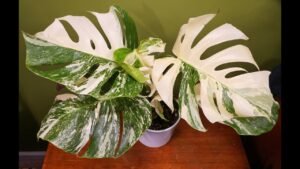Spring is more than just a season of color—it’s a critical time for pollinators like bees to find the food and shelter they need to survive. One of the best things you can do to support them? Plant flowers for bees in your yard.
According to professional gardeners, selecting the right blooms this spring can turn even a small patch of soil into a haven for honeybees, bumblebees, and solitary bees alike. Below, we’ll walk you through the six best strategies—with flower recommendations—to help these hardworking pollinators thrive.
1. 🌼 Best Native Flowers for Bees in U.S. Spring Gardens
The first rule of supporting pollinators: go native. Native flowers have co-evolved with local bees, providing the nectar, pollen, and bloom cycles they rely on.
Top Native Flowers for Bees:
- Purple Coneflower (Echinacea) – A magnet for bumblebees and solitary bees
- Black-Eyed Susan (Rudbeckia) – Easy to grow and long-blooming
- Milkweed (Asclepias spp.) – Great for both bees and monarch butterflies
- Bee Balm (Monarda) – Its minty scent attracts bees in droves

Pro Tip: Avoid hybrid or double-petaled versions—they may look fancy but often lack accessible nectar.
2. 💧 Pair Your Bee Flowers with a Clean Water Source
Bees get thirsty too. In fact, they rely on water not just for hydration but for cooling their hives and feeding larvae.
How to Add Water for Bees:
- Use a shallow dish or birdbath filled with pebbles or marbles so bees can land safely.
- Change the water every few days to avoid mosquito breeding.
Position it near your flowers for bees, and you’ll create a more complete habitat.
3. 🐝 Create Nesting Habitats to Complement Your Blooms
Pollinators don’t just need food—they need safe places to nest. Over 70% of native bee species are solitary and nest in the ground or hollow stems.
How to Create Nesting Space:
- Leave bare patches of soil for ground nesters like mining bees.
- Install bee hotels made of bamboo or drilled wood for cavity nesters.
- Don’t over-mulch—many bees can’t dig through heavy layers.
Shelter + flowers for bees = a full-service pollinator retreat.
4. 🌸 Choose Long-Blooming Flowers Bees Will Love All Season
A single weekend of bloom isn’t enough—bees need continuous food sources from early spring to late fall.
Long-Blooming Flowers to Consider:
- Lavender – Fragrant and full of nectar
- Zinnias – Bloom all summer into fall
- Coreopsis – Sunny color and drought-tolerant
- Sunflowers – Big, bold, and pollen-rich
Stagger your planting so something is always in bloom. The more consistent your garden, the more bees will stick around.

5. 🧴 Ditch the Pesticides to Keep Your Garden Bee-Safe
This tip is critical: pesticides—especially neonicotinoids—are lethal to bees. Even “bee-friendly” products can be misleading.
Safe Gardening Practices:
- Choose organic pest control methods like neem oil or insecticidal soap.
- Encourage natural predators like ladybugs or praying mantises.
- Always check labels for bee warnings before applying anything.
Healthy flowers for bees are only helpful if the environment is chemical-free.
6. 🌷 Use Flower Clumps and Groupings to Attract More Bees
Bees are efficient foragers—they want big targets and large floral displays.
Why Clumping Works:
- Groups of 3+ plants are more noticeable than scattered singles
- Reduces energy bees spend flying between blooms
- Helps different bee species forage more efficiently
For example, plant a 5-foot strip of bee balm or a cluster of lavender bushes. You’ll be amazed how quickly bees catch on.
🌿 Final Thoughts: Build a Buzz-Worthy Yard This Spring
Adding flowers for bees to your spring garden isn’t just about aesthetics—it’s about stewardship. By planting native blooms, providing water and nesting spots, and eliminating harmful chemicals, you create a safe, welcoming space for our most vital pollinators.
Whether you have a full backyard or just a few pots on a patio, you can make a difference this season—one flower at a time.
🧠 FAQs About Flowers for Bees
Q1: What color flowers do bees prefer?
Bees are most attracted to blue, purple, white, and yellow flowers. Avoid red—it’s hard for them to see.
Q2: Can I plant flowers for bees in containers?
Absolutely! Use large containers and group plants like lavender, thyme, or bee balm. Just make sure they get enough sunlight and water.
Q3: When should I start planting in the U.S.?
Most regions can start planting in early spring (March–May) depending on your USDA hardiness zone. Use a native plant finder to see what thrives in your area.
Q4: Are all flowers good for bees?
No—some hybrids have been bred for looks, not nectar. Always choose single-petaled, native species whenever possible.



